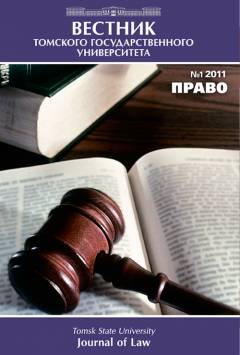The object of the exchange of duties between legal life subjects
Nowadays, jurists develop and propose new categories whkh reflet the evolutional process in the sphere of legal stie^e. Being one of su^ categories, legal life was mentioned in the works of prerevolutionary Russian stientists and is fully oonsidered at a modern stage of development. The artide deals with the separate elements of legal life and their analysis that enables us to form a ramprehensive perception of the given legal category and characterize it as a separate legal phenomenon. The author separates the ex^ange of duties between the partitipants of relations as a universal o^enon whkh enables us to differentiate legal, eoonomk, sotial and polit^a! life. Moreover, the author gives a detailed analysis of a separate element of such an exchange - the object of the exchange of duties between legal life subjects. The element deals with such manifestations of legal life as individual, group, public and international forms. A detailed consideration of the constituent elements of legal life has not only a theoretical significance but promotes a more sensible, effective, competent and purposeful activity when realizing the right in all its forms. This fact is supported by the provision that citizens, legal entities and officials in state bodies are the subjects involved in legal life and they develop a pattern for the creation of law, its realization and application in modern Russian society.
Keywords
правовая жизнь, индивидуальная правовая жизнь, групповая правовая жизнь, общественная правовая жизнь, предмет обмена обязанностей субъектов правовой жизни, legal life, individual legal life, group legal life, publ^ legal life, objert of the ex^ange of duties between legal life subjertsAuthors
| Name | Organization | |
| Orlov Cyril A. | Ural juridkal Institute of the Ministry of internal Affairs of Russia | orlov.82@mail.ru |
References

The object of the exchange of duties between legal life subjects | Tomsk State University Journal of Law. 2016. № 4(22). DOI: 10.17223/22253513/22/2